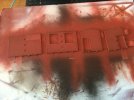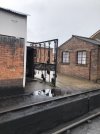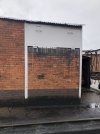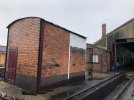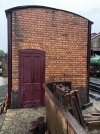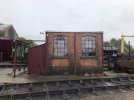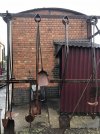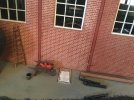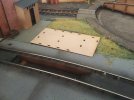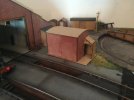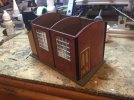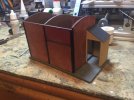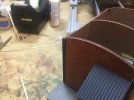As promised, some photos of the building, pretty much complete. I’ll do some further photo searching over the weekend before probably painting the lower brick courses with a thin black wash.
I’m going to run the printer this weekend too, I need loco springs and a backhead for Tony’s Manor and some other details for the 136x projects, to which I’ll add a stovepipe chimney to finish it off. There are some other printer projects bubbling away, more later maybe…
I have an inkling to tinkering with some brass to make all those fire dropping shovels, scrapers and darts, and the rack on which they’re hanging as in my photos above. Would add some interesting detail and might fit nicely in the triangle between the sand furnace and the turntable.
And I have a lattice post for a high lamp, typical of GW shed aprons. Not sure how to make the lamp glass yet, but I think that and some cleaning platforms will just about finish that area of the shed.
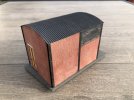
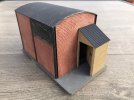
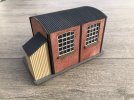
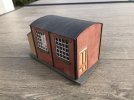
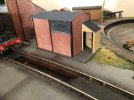
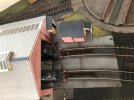
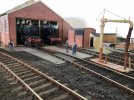
Though this last photo reminds me that I still haven’t finished the shed doors, and the windows & smoke hoods above them. Must get the artwork for the etched hinges over to Jon.
Back to the Sand Furnace.
@BrushType4 Phil had included a spare test made from self adhesive material - this was for the H girder flanges and the sand hopper door & some hinge detail. I didn’t use it for the girders, but I did for the sand hopper door - having pre-painted it, I lined it up with wires for the handle holes before dropping it into place and pressing down. The half etched finish is slightly rough, welcome texture, and if you’re modelling latter days where it might be showing signs of rust I think it would dry brush nicely. Not in 1930s GW though

The roof is lovely corrugated card, looks entirely reasonable for wriggly tin in 7mm at 3.5 corrugations per foot, and around 1.5” thick (apparently sand furnaces had asbestos roof panels, slightly coarser corrugations I think).
I fitted a light, which will shine out through the windows and door - I had lasered some doors and door frames a while back when I was backdating the station buildings I purchased from
@LarryG and I used one of them in the porch so I could model the door open.
I didn’t fit an interior in the end, no data. If ever I find out what should be in there, and if I decide it’s a modelling priority, I might have to ask Phil for another roof.
Conclusion, as Tony joked, my photos were indeed for brick counting, but Phil has saved me the effort of designing and making my own building. The kit is lovely, goes together very precisely, and captures the prototype very well in my view. This was a pre-production kit and there was one minor issue which Phil has fixed in the artwork, and the corrugated card roofing is nicer that the stuff I was going to use, and I think Phil’s approach to the H girders is better than what I would have done, so a winner all round.
Mark me down as a happy customer, happy to recommend the kit!


